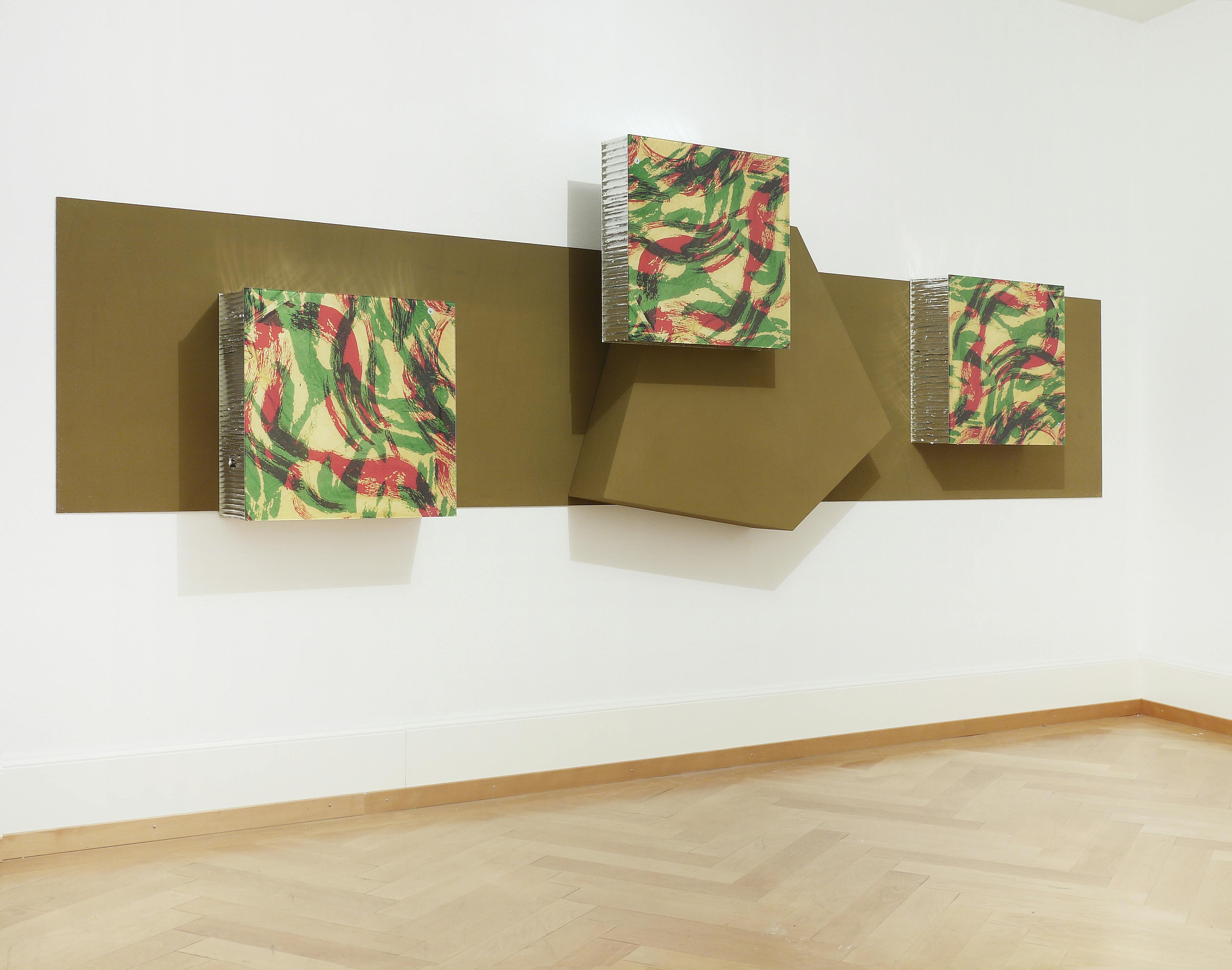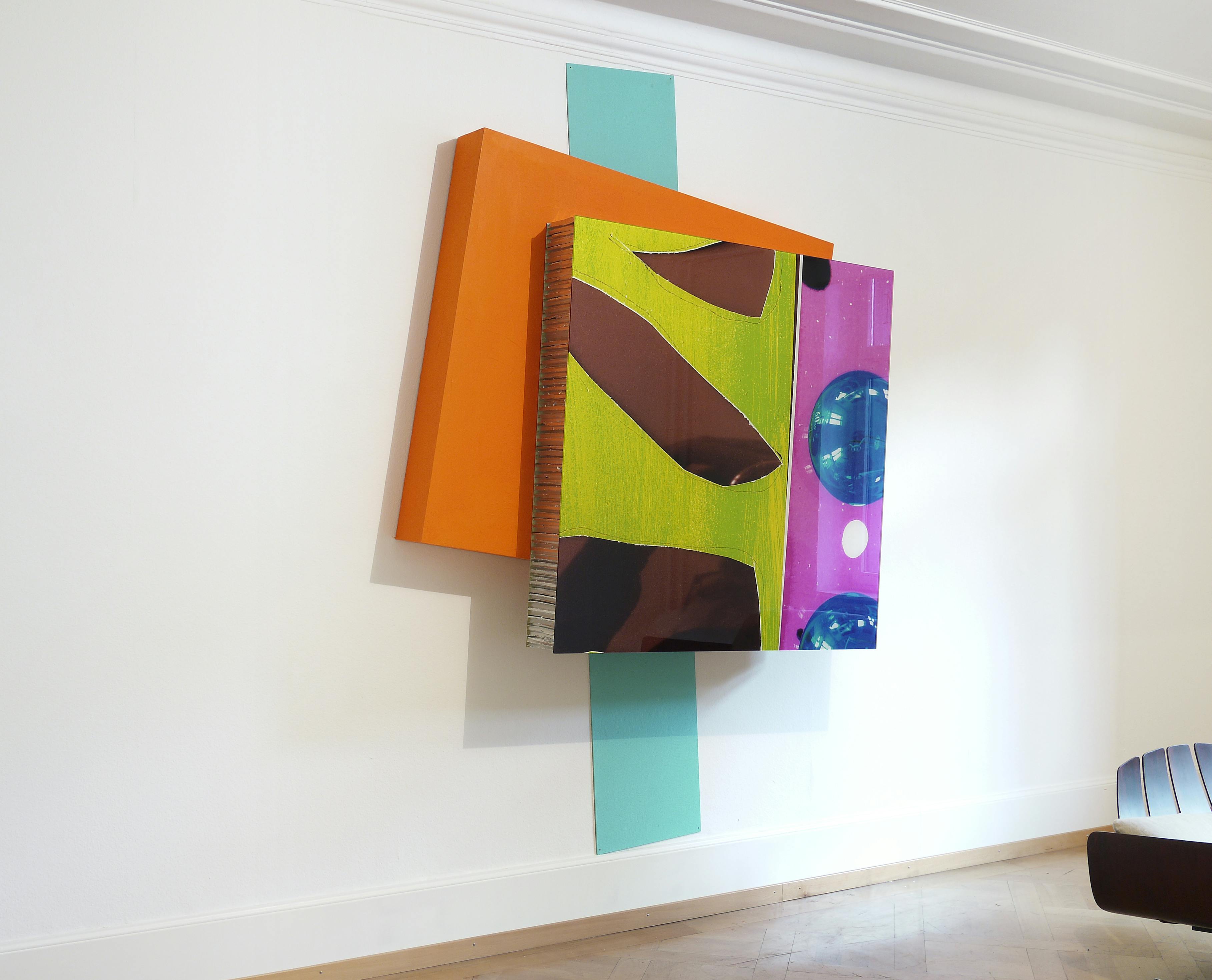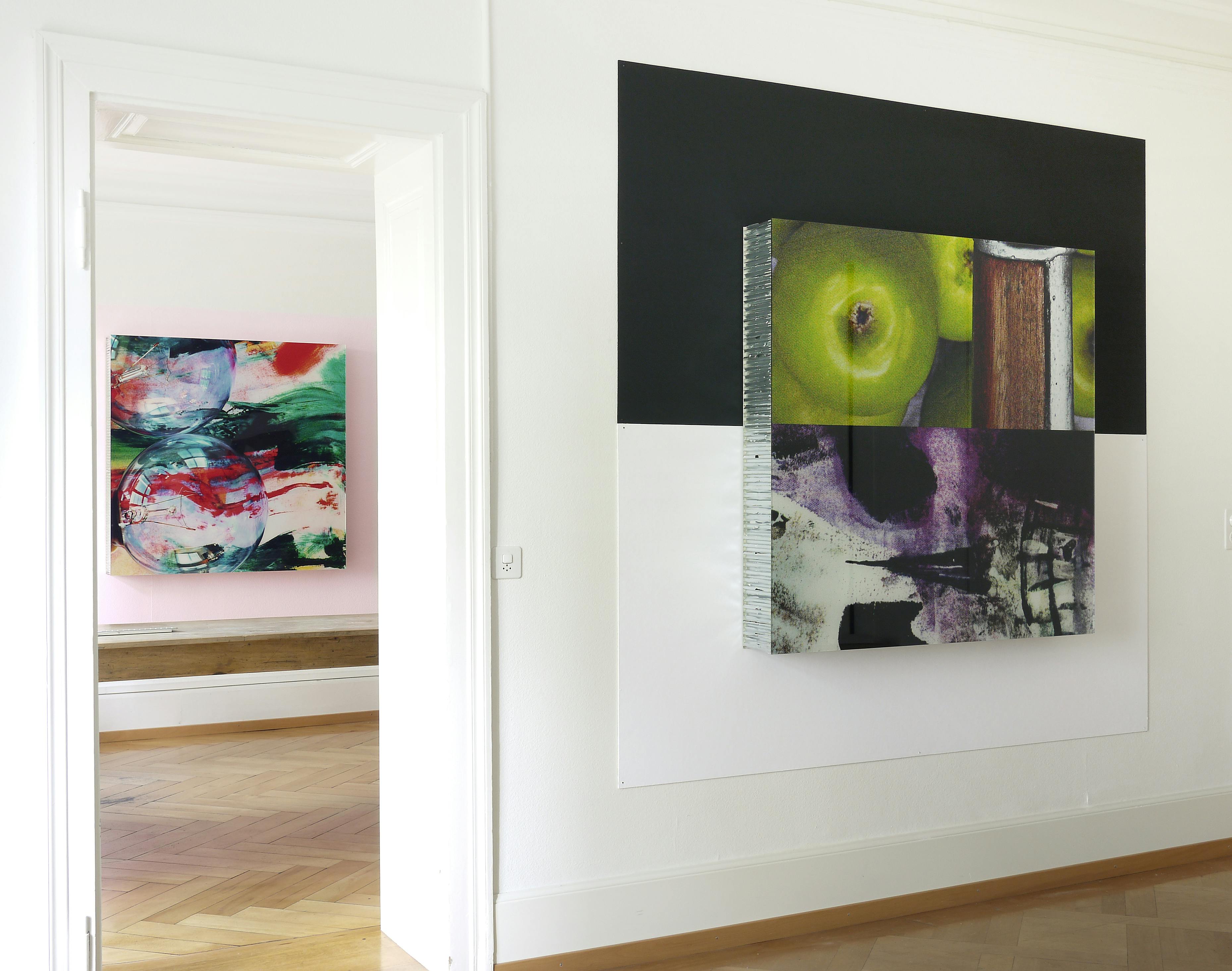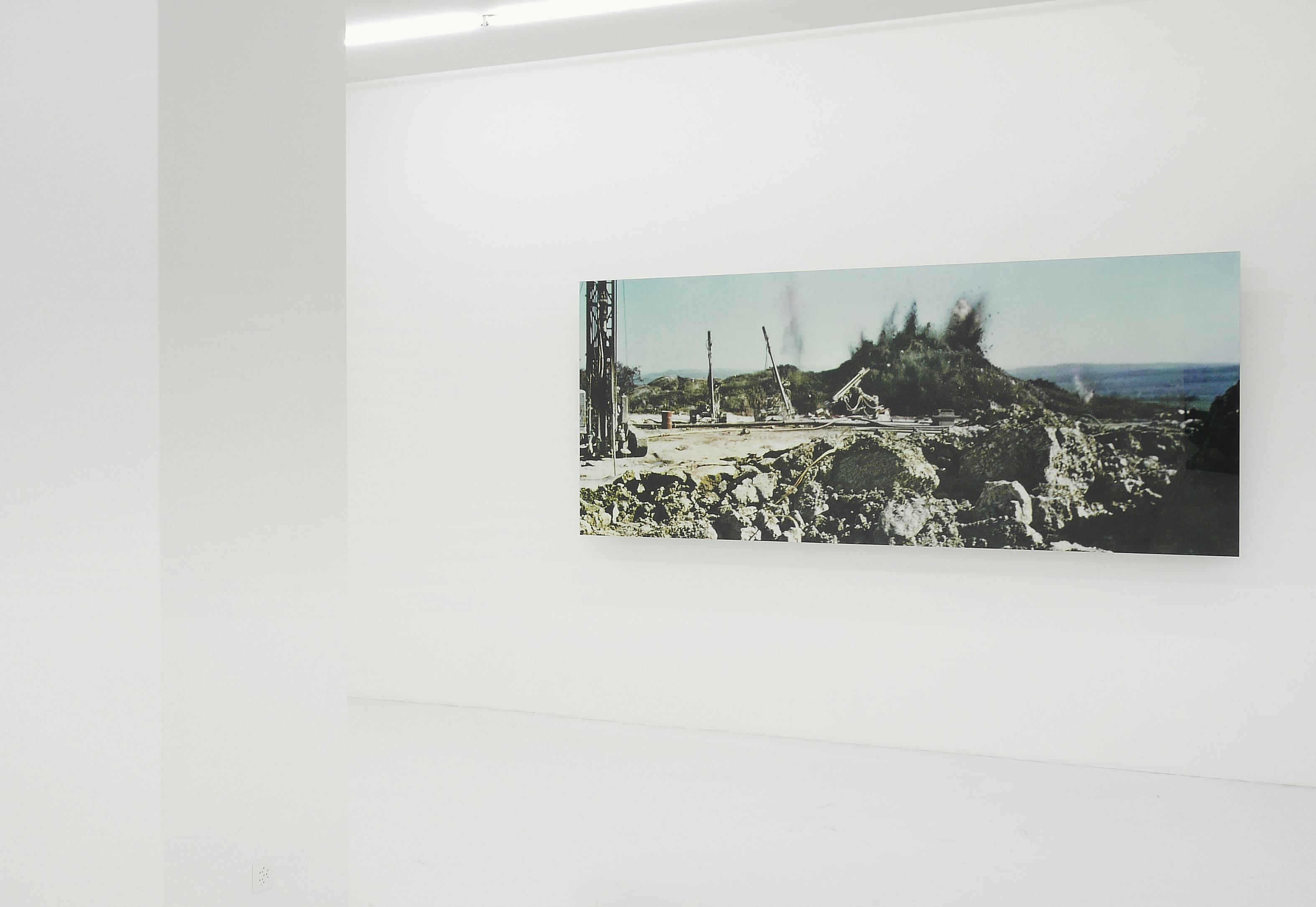Harald F. Müller, born in 1950, lives and works on the Höri peninsula of Lake Constance. He fills entire rooms with his strongly coloured wall pieces, which possess a sculptural quality. They are often multi-part works, invariably including photographic material. He has also built up a repertoire of appropriated photographic images, carefully researched and collected, which he repeatedly uses in the works he calls Reproductions. In addition, he develops colour concepts for buildings in collaboration with architects such as Gigon/Guyer, and creates colour- oriented sculptures for public spaces. His forthcoming book First Cuts, with texts by Gerd Blum and Johan F. Hartle at Lars Müller Publishers, presents Müller’s large-format art works in the Prime Tower, Zurich, in a cosmological context and discusses them in relation to his oeuvre as a whole. We will be issuing a separate invitation to the book launch at the gallery.
The motifs in the Reproductions have all had a previous life or career, as it were, having been created under very different circumstances as industrial or advertising photographs. What interests Müller about these images, which seem to float in front of the wall, is their purity of expression irrespective of date or place. In this respect, the Reproductions become images in their own right. A large, landscape format print, its brilliance heightened by the use of Cibachrome under acrylic , shows an explosion in the background and small drilling rigs dotted across the picture plane. The colours appear strangely alien, while the compositional structure is that of ideal landscape portrayals. What is particularly striking, however, is the impression of the destruction of a setting that is itself man- made, as though civilisation was self-destructing (Nylon, 2013). Whether this is a scene orchestrated for visual purposes or whether it is a vintage documentary picture is unknown and, indeed, unimportant for the context is missing, as though excised. Japan II, 2013 looks similarly alien and striking. It is a large-format print of an aggressive scene. A person sitting behind a table is being attacked a man in front of the table. He has grabbed a microphone that the others were presumably using for (perhaps) a press conference. Here, too, there is an overall sense of alienation. The Japanese writing on the wall and the supposed communicative aspect of the scene are not entirely decipherable to a viewer who is unfamiliar with the language. This generates a sense of detachment based on exoticism – an age-old theme that still has validity, all the more so in the political context of today.
Another group of works, called Cuts, appears technoid and abstract: cuts, space and collage, plane and colour. Cropped photographic images are mounted on a metal panel with an open honeycomb structure, closed only by the picture itself on the front and the wall at the back. The strangely coloured, grainy images show, for instance, a young black man thirstily drinking from a coconut. It is the image of a cliche: youth, South Seas, health, etc. merge into a vision of yearning that is clearly entirely artificial, set against a brightly painted wall. Still other works combine found images, both photographed and collaged, into bewildering visual experiences. These visual sculptures or wall pieces are layered to form colourful volumes and planes, whereby image, pictorial space and background material all outshine each other in brightness, with the metal of the carrier reflecting at the sides. This juxtaposition of cropping, colour, planarity and three-dimensionality eludes categorisation. Through their colority, the works command and dominate the space, their radiance filling the room and captivating the viewer.
Stendhals novel Le Rouge et le Noir portrays a dramatic and inevitable progression, while the title itself uses colour to conjure an unfathomably shimmering abyss in the mind’s eye. The dramatic and shimmering use of colour is also a trait of Harald F. Müller‘s oeuvre. His work of the same name, from which the exhibition also takes its title, consists of unexposed and undeveloped brownish Cibachrome paper, which still harbours all the colours within it, including its brightest: red. It is mounted on honeycomb against a black background. In their extreme artificiality, his works command a tangibly physical presence in terms of their colour, form and abstract quality.









